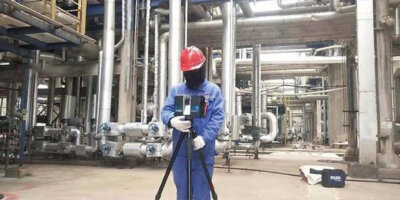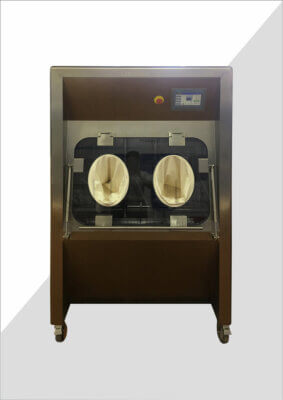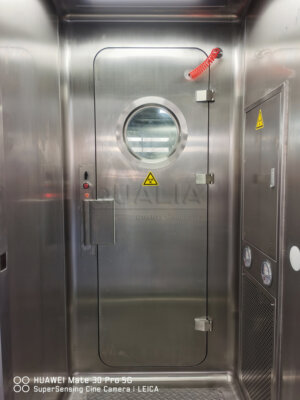In an era where public health and environmental safety are paramount concerns, decontamination systems play a crucial role in maintaining cleanliness and preventing the spread of harmful substances. These systems are essential in various settings, from healthcare facilities to industrial plants, ensuring that spaces, equipment, and even individuals are free from dangerous contaminants. As technology advances, so do the methods and efficiency of decontamination, offering more comprehensive and effective solutions to combat a wide range of potential hazards.
Decontamination systems encompass a variety of techniques and equipment designed to eliminate or neutralize harmful biological, chemical, or radioactive substances. These systems are tailored to specific environments and contaminants, utilizing methods such as chemical disinfection, heat sterilization, and advanced technologies like vaporized hydrogen peroxide (VHP) and ultraviolet (UV) light. The choice of system depends on factors including the nature of the contaminant, the scale of the operation, and the sensitivity of the materials being treated.
As we delve deeper into the world of decontamination systems, we'll explore their various applications, the technologies driving their effectiveness, and the critical role they play in safeguarding public health and environmental integrity. From hospital rooms to hazardous waste facilities, these systems are the unsung heroes in the fight against invisible threats, ensuring that our spaces remain safe and sanitized.
Decontamination systems are essential for maintaining public health and environmental safety by eliminating harmful biological, chemical, and radioactive substances from various settings and materials.
| Method | Application | Effectiveness | Environmental Impact |
|---|---|---|---|
| Chemical Disinfection | Surfaces, equipment | High for most pathogens | Potential chemical residues |
| Heat Sterilization | Medical instruments | Very high for all microorganisms | Low environmental impact |
| VHP (Vaporized Hydrogen Peroxide) | Rooms, large equipment | High, leaves no residue | Breaks down into water and oxygen |
| UV Light | Air, surfaces | Effective for many pathogens | No chemical residue |
| Ultrasonic Decontamination | Delicate instruments | High for removing particles | Low environmental impact |
What are the primary types of decontamination systems?
Decontamination systems come in various forms, each designed to address specific contamination challenges. The primary types include chemical disinfection systems, thermal decontamination units, radiation-based systems, and physical removal methods. Chemical systems utilize powerful disinfectants to neutralize pathogens and harmful substances, while thermal systems use heat to sterilize equipment and materials. Radiation-based systems, such as those using UV light, can effectively decontaminate air and surfaces without leaving chemical residues.
Physical removal methods, including filtration and washing systems, are crucial for removing particulate matter and larger contaminants. Each type of system has its strengths and is often used in combination with others to provide comprehensive decontamination coverage.
The choice of decontamination system depends on factors such as the nature of the contaminant, the material being treated, and the specific requirements of the environment. For instance, healthcare facilities might employ a combination of chemical disinfection for surfaces and thermal sterilization for medical instruments.
Chemical disinfection systems are widely used due to their versatility and effectiveness against a broad spectrum of pathogens, with some modern formulations capable of neutralizing 99.99% of common bacteria and viruses.
| Decontamination Type | Contaminants Targeted | Speed of Action | Suitable Environments |
|---|---|---|---|
| Chemical Disinfection | Bacteria, viruses, fungi | Fast (minutes) | Hospitals, laboratories |
| Thermal Sterilization | All microorganisms | Moderate (15-30 minutes) | Medical facilities, food industry |
| UV Light Systems | Airborne pathogens | Very fast (seconds) | HVAC systems, clean rooms |
| Physical Removal | Particulates, large contaminants | Varies | Industrial settings, water treatment |
How do vaporized hydrogen peroxide (VHP) systems work?
Vaporized hydrogen peroxide (VHP) systems represent a cutting-edge approach to decontamination, particularly in sensitive environments like pharmaceutical manufacturing facilities and hospital rooms. These systems work by converting liquid hydrogen peroxide into a vapor form, which is then dispersed throughout the target area. The VHP penetrates even hard-to-reach spaces, effectively eliminating a wide range of microorganisms.
The process begins with the generation of hydrogen peroxide vapor, typically at a concentration of around 35%. This vapor is then distributed evenly throughout the space using specialized equipment. The VHP reacts with cellular components of microorganisms, oxidizing them and rendering them inactive. After the decontamination cycle, the VHP naturally breaks down into water vapor and oxygen, leaving no harmful residues.
One of the key advantages of VHP systems is their ability to decontaminate large areas quickly and efficiently without the need for extensive manual labor. They are particularly effective against resistant pathogens like bacterial spores, which can be challenging to eliminate with other methods.
VHP systems have demonstrated efficacy in reducing microbial contamination by up to 6-log (99.9999%) in controlled environments, making them a preferred choice for critical decontamination needs in healthcare and pharmaceutical settings.
| VHP System Component | Function | Typical Specifications |
|---|---|---|
| Vapor Generator | Produces H2O2 vapor | 30-35% H2O2 concentration |
| Distribution System | Disperses vapor | Coverage up to 1000 m³ |
| Sensors | Monitor vapor concentration | Accuracy within ±1 ppm |
| Aeration Unit | Removes residual vapor | Reduces H2O2 to <1 ppm |
What role do effluent decontamination systems play in environmental protection?
Effluent decontamination systems are critical in safeguarding our environment from potentially harmful waste products generated by various industries and facilities. These systems are designed to treat liquid waste streams, ensuring that any hazardous or contaminated effluents are neutralized or removed before being released into the environment. This process is essential for protecting water sources, ecosystems, and public health.
The systems typically employ a combination of physical, chemical, and biological treatment methods. Physical methods might include filtration and sedimentation to remove solid particles. Chemical treatments can involve the addition of neutralizing agents or disinfectants to eliminate harmful substances. Biological treatments utilize microorganisms to break down organic contaminants.
Advanced effluent decontamination systems often incorporate technologies such as membrane filtration, advanced oxidation processes, and UV disinfection to achieve higher levels of purification. These systems are particularly important in industries such as pharmaceuticals, chemical manufacturing, and healthcare, where waste streams can contain a variety of complex and potentially dangerous compounds.
Effluent decontamination systems in some advanced facilities can remove up to 99.9% of harmful contaminants from waste streams, significantly reducing the environmental impact of industrial and medical processes.
| Treatment Stage | Method | Contaminants Removed | Efficiency |
|---|---|---|---|
| Primary | Physical separation | Solids, oils | 60-70% |
| Secondary | Biological treatment | Organic matter | 85-95% |
| Tertiary | Advanced filtration/oxidation | Chemicals, pathogens | 95-99% |
| Quaternary | Specialized treatments | Specific pollutants | >99% |
How are decontamination systems integrated into healthcare facilities?
Decontamination systems are an integral part of modern healthcare facilities, playing a crucial role in preventing the spread of infections and maintaining a safe environment for patients and staff. These systems are strategically integrated throughout the facility, from operating rooms to patient wards, and even in ambulances and emergency vehicles.
In hospitals, central sterilization departments often serve as the hub for decontamination activities. Here, reusable medical instruments and equipment undergo rigorous cleaning, disinfection, and sterilization processes. Automated washer-disinfectors and steam autoclaves are common fixtures in these departments, ensuring that items are thoroughly decontaminated before reuse.
For room decontamination, many healthcare facilities have adopted technologies such as UV-C light systems and hydrogen peroxide vapor generators. These can be used to disinfect entire rooms between patient stays, significantly reducing the risk of hospital-acquired infections. Portable units allow for flexible deployment throughout the facility as needed.
Air handling systems in healthcare settings often incorporate HEPA filtration and UV irradiation to maintain clean air quality. These systems work continuously to remove airborne pathogens and particulates, creating a safer environment for vulnerable patients.
Studies have shown that the implementation of comprehensive decontamination systems in healthcare facilities can reduce the incidence of hospital-acquired infections by up to 30%, highlighting their critical importance in patient care settings.
| Healthcare Area | Decontamination Method | Frequency | Effectiveness |
|---|---|---|---|
| Operating Rooms | VHP, UV-C light | After each procedure | 99.9999% reduction |
| Patient Rooms | Electrostatic sprayers | Daily and upon discharge | 99.99% reduction |
| ICU | HEPA filtration, UV air treatment | Continuous | 99.97% air purification |
| Ambulances | Aerosol-based systems | After each transport | 99.9% surface disinfection |
What advancements are being made in portable decontamination systems?
The field of portable decontamination systems has seen significant advancements in recent years, driven by the need for flexible and rapid response solutions in various scenarios. These portable systems are designed to be easily transported and quickly deployed, making them invaluable in emergency situations, field operations, and temporary facilities.
One notable advancement is the development of compact, all-in-one decontamination units. These systems often combine multiple decontamination methods, such as chemical sprayers, UV-C lamps, and HEPA filtration, in a single, portable package. This versatility allows for effective decontamination across a wide range of contaminants and environments.
Another area of innovation is in battery-powered and energy-efficient designs. These allow for operation in remote locations or during power outages, ensuring that decontamination efforts can continue uninterrupted. Some systems now incorporate smart technology, enabling remote monitoring and control via mobile devices.
Advancements in materials science have led to the development of more durable and lightweight components, making portable systems easier to transport and more resistant to harsh environments. Additionally, improvements in nebulization technology have resulted in more efficient dispersal of decontamination agents, ensuring better coverage and effectiveness.
Recent field tests of advanced portable decontamination systems have demonstrated their ability to achieve a 4-log (99.99%) reduction in bacterial spores within 15 minutes, a significant improvement over previous generations of portable units.
| Feature | Benefit | Application |
|---|---|---|
| Multi-method integration | Versatile decontamination | Emergency response |
| Battery power | Off-grid operation | Remote locations |
| Smart controls | Remote monitoring | Large-scale events |
| Improved nebulization | Better coverage | Confined spaces |
| Lightweight materials | Increased portability | Military operations |
How do decontamination systems address different types of hazards?
Decontamination systems are designed to address a wide range of hazards, including biological, chemical, and radiological contaminants. Each type of hazard requires a specific approach to ensure effective neutralization or removal. Understanding these different approaches is crucial for implementing comprehensive decontamination protocols.
For biological hazards, such as bacteria, viruses, and fungi, decontamination systems often employ a combination of physical and chemical methods. UV-C light systems are effective against many microorganisms, disrupting their DNA and rendering them inactive. Chemical disinfectants, including hydrogen peroxide and chlorine-based solutions, are also widely used for their broad-spectrum antimicrobial properties.
Chemical hazards present a different challenge, often requiring specialized neutralization processes. For instance, acid spills might be treated with alkaline solutions to neutralize their effects. Activated carbon filtration systems are effective in removing many chemical contaminants from air and water. In some cases, chemical decontamination may involve converting hazardous substances into less harmful compounds through oxidation or reduction reactions.
Radiological hazards require unique decontamination approaches. While radioactive contamination cannot be neutralized in the same way as chemical or biological hazards, it can be removed from surfaces and contained. This often involves careful washing procedures, the use of chelating agents to bind radioactive particles, and specialized disposal methods for contaminated materials.
Advanced multi-hazard decontamination systems have been developed that can detect and automatically adjust their treatment methods based on the type of contaminant present, with some capable of addressing up to 99% of known chemical, biological, and radiological threats.
| Hazard Type | Primary Decontamination Methods | Secondary Methods | Safety Considerations |
|---|---|---|---|
| Biological | UV-C light, Chemical disinfectants | Heat treatment | Personal protective equipment |
| Chemical | Neutralization, Activated carbon | Oxidation/Reduction | Ventilation, Containment |
| Radiological | Physical removal, Chelation | Time decay | Radiation shielding, Dosimetry |
What are the environmental considerations in decontamination system design?
Designing decontamination systems with environmental considerations in mind is becoming increasingly important as organizations strive to balance effective contamination control with ecological responsibility. This approach involves considering the entire lifecycle of the decontamination process, from the sourcing of materials to the disposal of waste products.
One key consideration is the choice of decontamination agents. Many traditional chemical disinfectants can have negative environmental impacts if released into ecosystems. As a result, there's a growing trend towards using more environmentally friendly alternatives, such as hydrogen peroxide-based systems that break down into water and oxygen. Similarly, UV-C light systems offer effective decontamination without the use of chemicals, reducing the potential for environmental contamination.
Energy efficiency is another critical factor in environmentally conscious design. Modern decontamination systems often incorporate energy-saving features such as low-power LED UV lamps, heat recovery systems in thermal decontamination units, and smart controls that optimize energy use based on contamination levels.
Water conservation is also a significant concern, particularly in areas where water resources are scarce. Advanced decontamination systems may include water recycling capabilities, allowing for the reuse of treated water in non-critical applications. Some systems also employ dry decontamination methods, such as CO2 cleaning, which can significantly reduce water consumption.
Recent innovations in green decontamination technologies have led to systems that reduce water usage by up to 80% and energy consumption by 50% compared to traditional methods, while maintaining equivalent or superior decontamination efficacy.
| Environmental Aspect | Design Consideration | Potential Benefit |
|---|---|---|
| Chemical Use | Biodegradable agents | Reduced ecological impact |
| Energy Consumption | LED technology, Smart controls | Lower carbon footprint |
| Water Usage | Recycling systems, Dry methods | Conservation of water resources |
| Waste Management | On-site treatment, Recyclable materials | Minimized landfill impact |
| Air Quality | HEPA filtration, Low-VOC processes | Reduced air pollution |
In conclusion, decontamination systems stand as a critical line of defense in our ongoing efforts to maintain public health and environmental safety. From healthcare facilities to industrial settings, these systems play an indispensable role in eliminating harmful contaminants and preventing the spread of diseases. As we've explored, the field of decontamination is diverse and rapidly evolving, with advancements in technology continually improving the efficiency, effectiveness, and environmental sustainability of these crucial systems.
The integration of smart technologies, the development of more eco-friendly decontamination agents, and the increasing portability of systems are just a few of the exciting trends shaping the future of decontamination. These innovations not only enhance our ability to respond to a wide range of contamination threats but also do so in a manner that is increasingly mindful of our environmental impact.
As global health challenges continue to evolve, so too will the sophistication and capabilities of decontamination systems. The ongoing research and development in this field promise even more advanced solutions in the future, potentially revolutionizing how we approach cleanliness and safety in various settings. From nanoscale decontamination technologies to AI-driven contamination detection and response systems, the possibilities are vast and promising.
Ultimately, the importance of decontamination systems extends far beyond the immediate removal of contaminants. These systems are fundamental to maintaining the health and safety standards that underpin modern society, playing a crucial role in everything from routine hospital operations to emergency response scenarios. As we continue to face new and evolving threats to public health and environmental safety, the ongoing advancement and widespread implementation of effective decontamination systems will remain a critical priority for communities and organizations worldwide.
External Resources
VHP Decontamination- Application, Types and Distribution – This article discusses the use of Vaporized Hydrogen Peroxide (VHP) in decontamination systems, including its applications, types of VHP generators, and distribution methods.
Effluent Decontamination Systems | Biowaste Sterilization | PRI BIO – This resource provides detailed information on effluent decontamination systems, including types such as continuous flow, batch, thermal, and chemical treatment.
AeroClave Decontamination Systems for Ambulances and other Emergency Industry Applications – This article focuses on AeroClave decontamination systems, particularly their use in ambulances and emergency vehicles.
Biosafety: Decontamination Methods for Laboratory Use – UCSD Blink – This resource outlines various decontamination methods used in laboratory settings, including heat sterilization, liquid disinfection, vapors and gases, and radiation.
Mention the Methods of Decontamination – Spaulding Decon – This article lists several methods of decontamination, including disinfection, ultrasonic decontamination, physical decontamination, sterilization, water purification, and antisepsis.
Related Contents:
- Water Decontamination: Essential Methods for Clean, Safe Water
- Decontamination Cleaning: Ensuring Safety Through Thorough Sanitization
- Effluent Decontamination: Safeguarding Our Environment
- Comprehensive Guide to Using the Qualia VHP Robot
- Why Choose QUALIA’s VHP Robot for Complete Decontamination?
- Effluent Decontamination Systems (EDS) by QUALIA: Protecting Public Health and the Environment
- Revolutionizing Sterilization: The QUALIA VHP Robot
- Revolutionize Your Facility’s Hygiene with the VHP Robot
- Application of VHP Robot in Healthcare and Laboratories





























